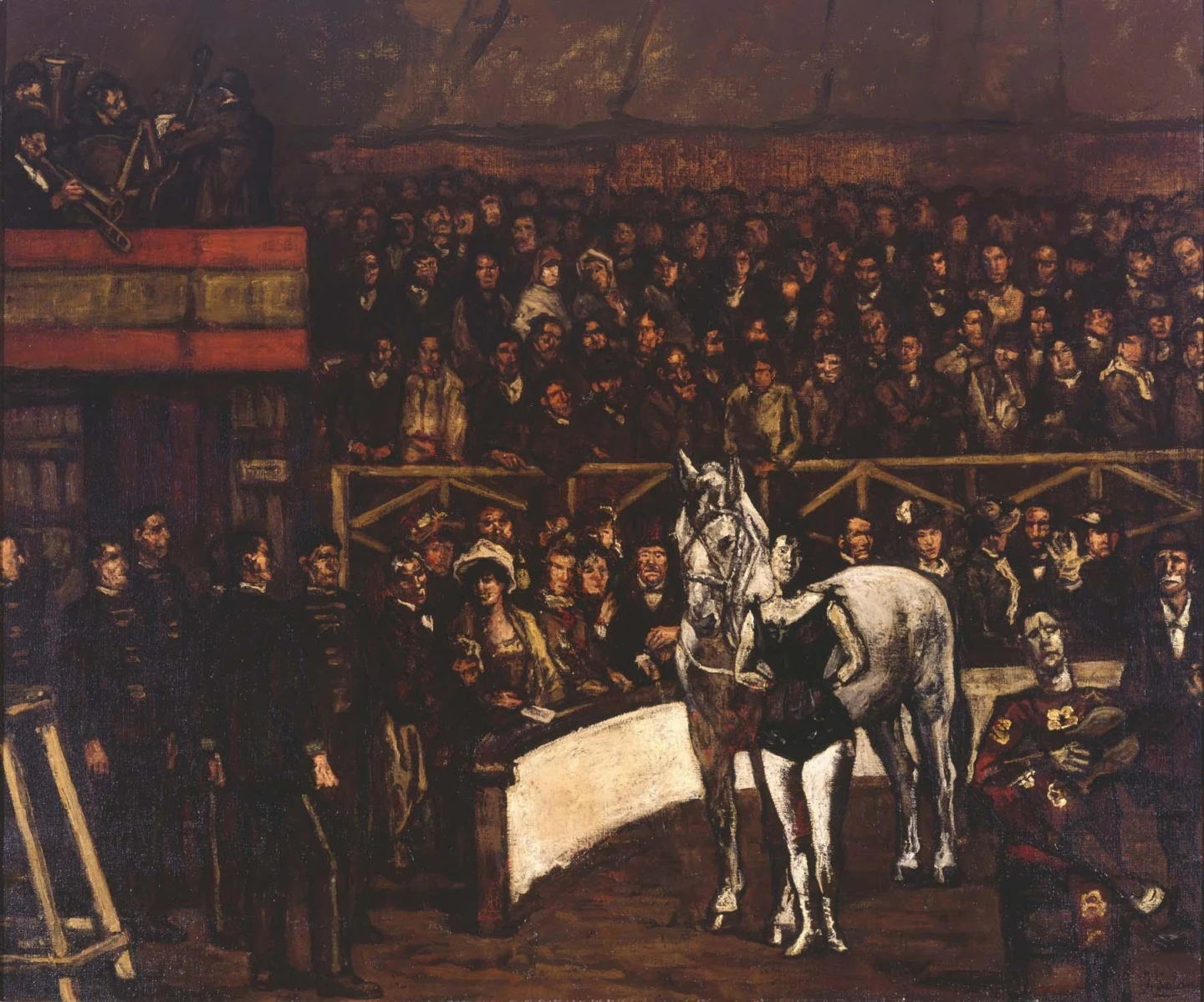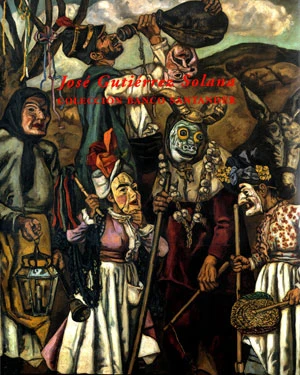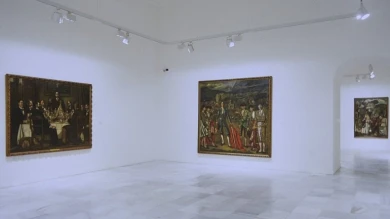José Gutiérrez Solana

<p></p>
Solana was a solo artist. During the Twenties he already stands out as a character beyond his time. This is reflected in his paintings of popular, dark atmospheres: taverns, lunch rooms for the poor, dingy markets, showgirls and cupletistas (singers of cuplés), fishing ports, crucifixions, religious processions, appalling slums, carnivals, giants and figures with large heads, pharmacy or sacristy gatherings, brothels, shops crammed with objects or tasks. Influenced by the work of Dario de Regoyos and Ignacio Zuloaga, Solana takes the critical social situation in Spain to the extreme, never imagining a possible redeeming solution. Solana’s palette is darker and more sordid than that of Goya even, because Spanish reality had become such. His work is, at the end, a metaphor for the impossible modernisation of Spain, a Spain that he tirelessly travels and reflects so well in his books. Although he had no disciples or even imitators the fascination Solana exerts both in life and later on artists, collectors and writers, was enormous.
The exhibition the Museum now dedicates to one of the greatest artists of its collection is in addition to the one at the Museum in 1998, José Gutiérrez Solana. Colección Banco Santander. This exhibition brings out, in addition to his art work, Solana’s formidable literary work. These works drew Camilo José Cela’s attention, to whom he dedicated his academic speech, which was edited by him. In this respect, it is worth remembering that in 2002 the public museum published, in collaboration with the Fundación Marcelino Botin, a box set with a prologue by him, including a facsimile edition of the Cuadernos de París (Journals of Paris), which shed new light on his writings and which is held at the Museum’s archive centre.
Artists
Organised by
Museo Nacional Centro de Arte Reina Sofía
Image gallery


